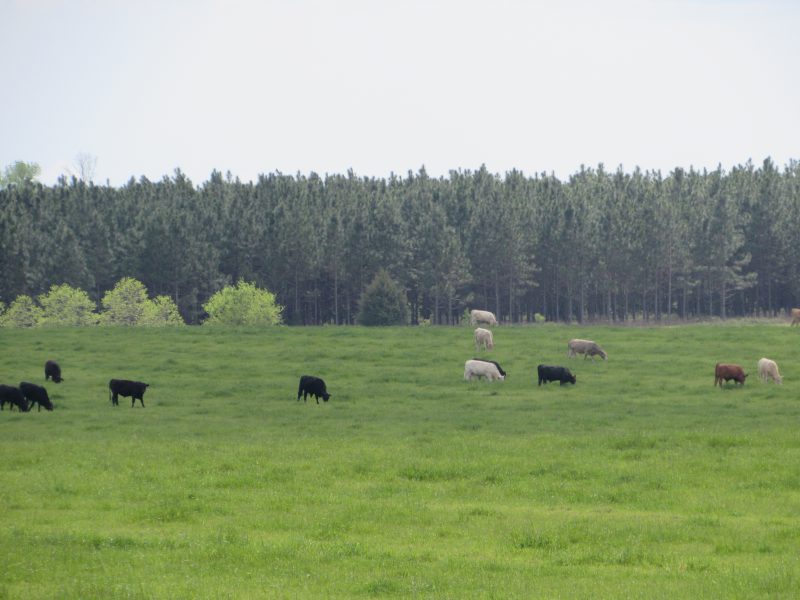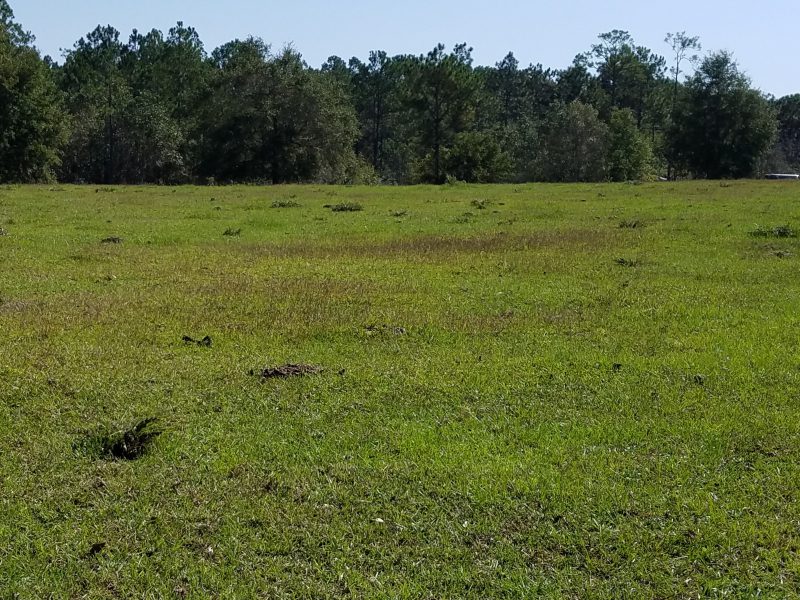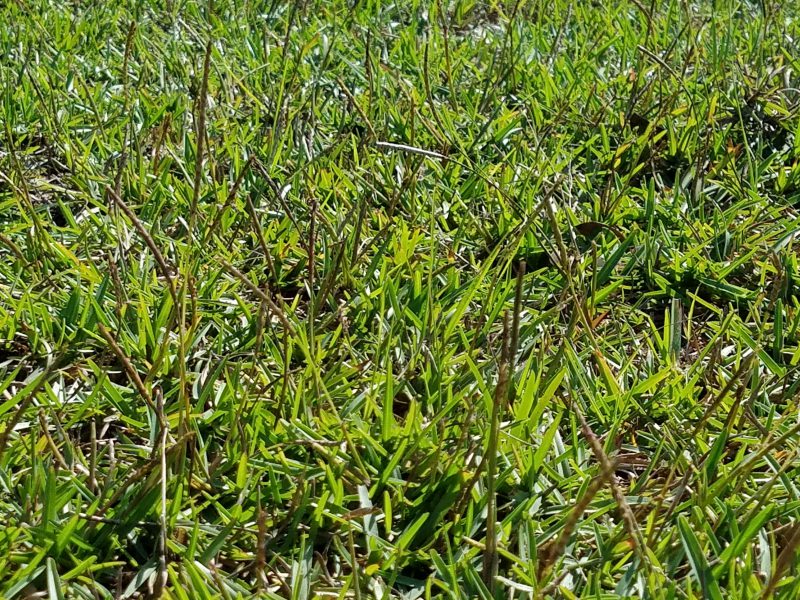
Livestock producers depend on forage grasses to feed their animals through the growing season. Grass weeds, however, can reduce pasture production and quality and are often more challenging to control than broadleaf weeds. Credit Evan Anderson, UF/IFAS
Managing a pasture comes with a host of potential problems: nutrient deficiencies, insect pests, weeds, and overgrazing can all cause serious issues when you’re just trying to grow some forage. At times, several minor problems can all add up to one major one. Centipedegrass encroachment on bahia pastures is an excellent example.

Centipede grass can become a serious weed problem in Panhandle pastures. Maintaining a healthy and vigorous bahiagrass sod is the best defense against centipede infestations, such as this one in Walton County. Credit: Evan Anderson, UF/IFAS.
–
Bahiagrass is a fantastic pasture grass for the Florida Panhandle. It deals well with low fertility, hot weather, too much rain, not enough rain, and acidic soils. However, it isn’t the only grass that is well adapted to our area. Plenty of other grass species can become weedy in pastures, but one that might be considered desirable elsewhere is centipedegrass. Often used as a turfgrass in lawns, centipedegrass shares many of the benefits of bahia with a few important differences. First and foremost, centipede is a much lower yielding forage for livestock. Growing slowly and low to the ground, under the right conditions it can nevertheless become a problem in pastures.

In the late summer, centipedegrass can be positively identified by the seedheads. Credit: Evan Anderson, UF/IFAS
–
There are several factors that can lead to a healthy mat of centipede instead of bahiagrass. While bahia can tolerate relatively infertile soils, it does need to be fertilized to maintain a dense sod. Over time, bahiagrass pastures can slowly decline due to constant or regular intensive grazing and limited fertilization. Once there are open or weak areas in a pasture, grass and broadleaf weeds have a much greater opportunity to establish. Livestock will graze centipede too, but because the taller growing bahiagrass receives more grazing pressure its energy reserves are eventually depleted and the bahiagrass is slowly grazed out, leaving the centipede to creep in and fill the void. Once well established, the centipede grows dense enough to choke out any remaining bahiagrass plants.
Bahiagrass has a much greater response to nitrogen fertilization than centipede. Insufficient soil phosphorous or potassium can also impact bahiagrass stand health. Bahia suffers when overgrazed and may not remain competitive when soil pH dips down below 5.5. Pasture owners – especially those who have centipede lawns adjacent to their pastures – may find that centipede is better able to survive the harshest of conditions.
There are ways to avoid this weed infestation. Yearly soil testing will keep pasture owners well informed of their soil conditions and supply recommendations for liming and fertilization. Maintaing a soil pH of 5.5 and applying nutrients at recommended levels keeps the bahiagrass in peak performance. Though following soil test recommendations are always the best option, some general recommendations for fertilization can be found in the publication, Fertilizing and Liming Forage Crops. Grazing management is another key component. Heavy stocking rates and limited pasture rotation are often partial causes of bahiagrass decline, along with fertilization.
If you already have a pasture that is infested with centipede, unfortunately there is not a herbicide that can be safely sprayed over bahia pastures to selectively control centipedegrass. If centipedegrass is abundant enough that the pasture needs to be renovated – the entire stand (all centipede and any remaining bahia) must be killed out and the area replanted. 3-4 quarts of glyphosate per acre is sufficient to eliminate the stand. There are several factors that can dictate the the most appropriate timing to begin a pasture renovation project. Consult your County’s Agricultural Extension Agent to discuss your specific situation in detail. Pasture renovations are long and expensive projects – they need to be well thought out. Forage Planting and Establishment Methods on Prepared Seedbed does as excellent job describing the forage establishment process. Most importantly, if you invest the time, effort, and capital into renovating a centipede invested pasture, make sure you also address the issues that led to the infestation. Maintaining adequate soil fertility and using sound grazing management practices are essential to protect your investment and prevent re-infestation.
–
Use the following links for more information on this subject:
Fertilizing and Liming Forage Crops
Forage Planting and Establishment Methods on Prepared Seedbed
Grazing Management – Making the Most of the Available Forage
- When Grasses Collide – Centipede vs. Bahiagrass in Your Pasture - August 26, 2022
- Time to Think About Pond Weeds - March 18, 2022
- Avoiding Pesticide Resistance - September 24, 2021
